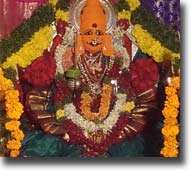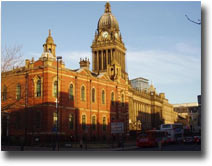Location :
Significance of the temple
A seventy two kilometers journey from the city of Karimnagar will take you to the heritage site of Manthani. The place is one of the most ancient centers of Vedic learning and several Vedic scholars reside in the area till today. Among other places of interests in the archaeological site, the Manthani Temple - Karimnagar is a prime attraction.
The Manthani temples are reminiscent of early Buddhist and Jain cultures, which makes it clear that Manthani was an important center for Jainism and Buddhism. The Manthani Temple has Gautameswar or Lord Shiva as the main worshiped deity. The Manthani Temple of Karimnagar in Andhra Pradesh has a great archaeological, historical and religious significance. In fact Manthani is blessed with not one but several ancient temples. Some of them are Lord Saileshwara Temple, Laxmi Narayana Swamy Temple, Mahalaxmi Temple, Gautameswara Temple, Vinayaka Temple, Dattatreya Temple, Saraswati Temple, Ramalayam Temple, Panchayatanam Temple and the Omkeshwara Temple.
Manthani is easily accessible from Karimnagar as taxis and buses are frequently available. The Manthani village is surrounded by the sacred Godavari river in the northern side, Bokkala Vaagu in the south, a lush green reserve forest in the east and Ravula Cheruvu - a small lake in the Western side. The main village is a small area of six square meters of area. Most of the temples in Manthani are built during the Kakatiya period. A big Shivling of about 1.25 m, made of black stone is enshrined in the sanctum sanctorum on a beautifully carved 'Panawatika' (platform or pedestal) according to 'Somasutra'.

Manthani has a garrulous history behind it. It is said that Aadi Shankaracharya (A.D.788-820), who visited Mantrakuta, was pleased to see the ceaseless recitation of Vedic Mantras in the village and recognised it as a Dharma-Pitham. The subjects like Vedas, Logic, Grammar, Astrology, Chandassu and Mimamasa are said to have been taught here by the scholars in Sanskrit.
| Even today Manthani is famous for Vedic Ghanapathis and the scholars well-versed in Agama Sastras and Dharma-sutras. The elders of this place say and believe that the word "Manthani" means a pot of buttermilk. Just as butter-milk is churned in a pot so also the Vedic Mantras are believed to be churned in this village. Manthani is believed to have derived its name from Mantra-Mathana, i.e. churning of the Mantras. Mantrakuta or Manthani was a great seat of Vedic learning from the times immemorial. | Nearby tourist places to Manthani Temple
Anantagiri Araku Valley Horsley Hills |
 |
Accommodation Facilities at the Temple
There are good options available for accommodation in Karimnagar. There are number of small hotels and lodges that provide some basic facilities. There are some good hotels which offer good rooms to stay and good service. Some places also provide facility of food for tourists depending on the availability
How to reach the Temple
There is local buses and taxi, available for moving and will easily make you reach Manthani from Karimnagar.
Karimnagar is connected well with all the major parts of the state.



